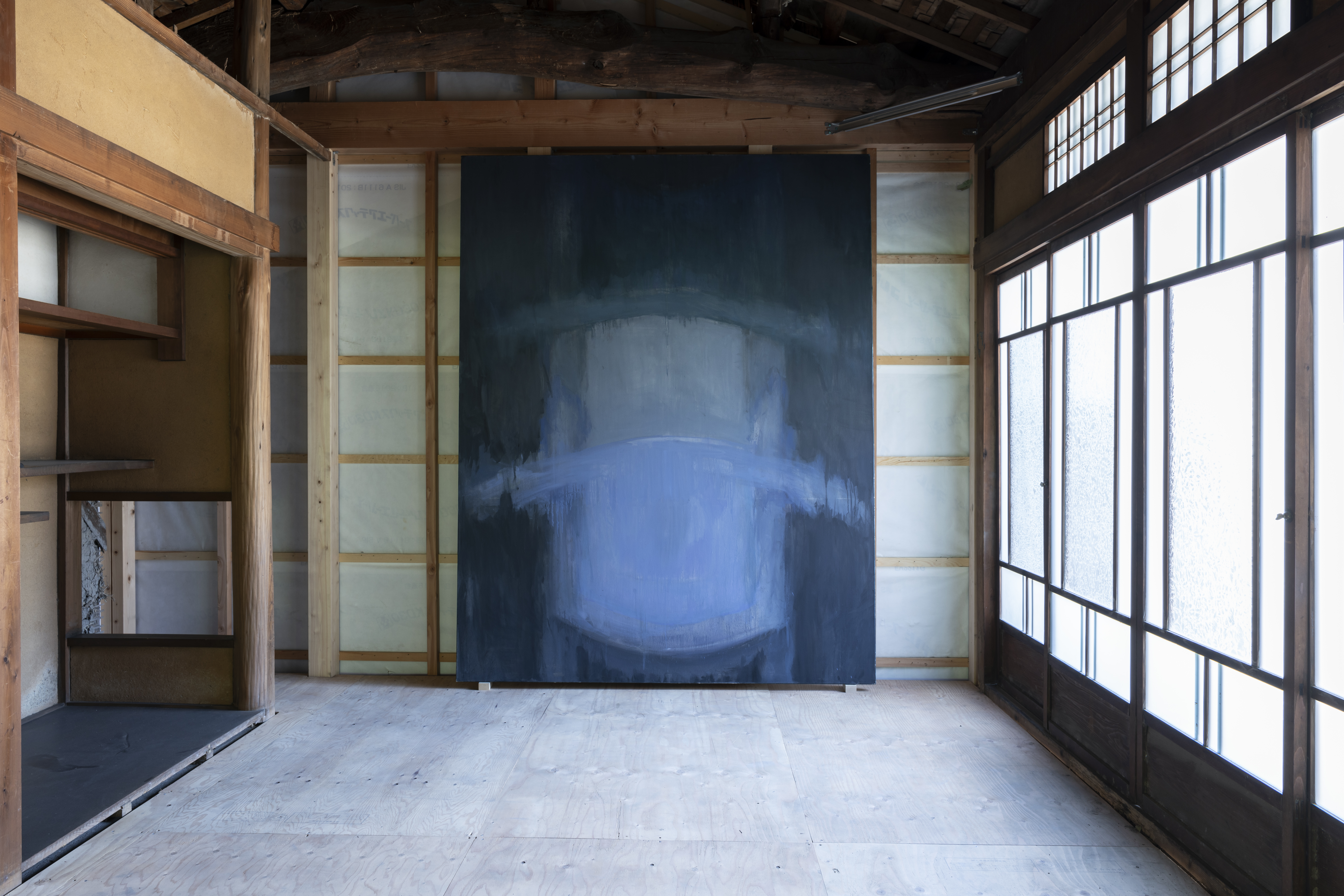Giannis Aristotelous explores emptiness in exhibition in abandoned Japanese homes
Combining his Mediterranean roots with the influence of Japanese aesthetics and philosophy, Ioannis (Giannis) Aristotelous is a Greek Cypriot artist making waves in Japan’s contemporary art scene. Based in Kyoto, he brings a unique blend of Eastern and Western sensibilities to his deeply introspective work, focusing on themes of death, emptiness and the unknown. His academic background includes a master’s degree from Kyoto University of the Arts and studies at the University of Applied Arts in Vienna. This cross-cultural journey enriches his art, adding a universal perspective.
In his first solo exhibition in Japan, a place to grieve, Aristotelous merges painting and installation art, focusing on the sensuous quality of interacting materials. Through chemical decomposition, oxidation and pigmentation, Aristotelous creates a metaphor for emptiness, inviting viewers to reflect on their relationship with the material world.
“I wanted this exhibition to foster a spiritual unity,” Aristotelous says. “It’s about grieving material loss in a space where dust and ruin are celebrated. The exhibition offers a place for mourning, allowing people to reflect on what has been lost.” His work revolves around a narrative of charged yet quiet interactions; human relationships and environmental connections. His installations and paintings are housed in two abandoned Japanese houses, which have been transformed into spaces of contemplation.
Central to Aristotelous’ work is the use of chemical decomposition and oxidation. These processes serve as metaphors for the ephemeral nature of life and the inevitable return to the earth. “The process of material decomposition forms a timeless connection to different historical epochs,” Aristotelous says. “My work deals with remnants that cannot be grasped or seen, balancing earthiness and metaphysics. It’s about exploring a universal understanding of spirituality formed through light and water.”

The artist’s use of water, light, and material remnants bridges the physical and the metaphysical. Water, the fundamental substance of life, plays a significant role. In combination with light, it exhibits a formless quality, emphasising the deteriorating structure of the buildings where the exhibition is held. Aristotelous’ water boxes, crafted from Japanese lacquer, alongside a blanket made of human hair, draw the spectator into a contemplative space. “Water allows external light in,” he says, “highlighting the transient nature of the materials and the space.”
Aristotelous’ work is influenced by the Japanese art movement mono-ha, which “deals with the spirit of materials. It allows them to form different relationships, something I’m deeply interested in. My work explores a new spiritual unity between human and material remnants.”
In addition, Aristotelous draws inspiration from Dadaism, where objects are placed in unexpected contexts to provoke new dialogues. “I deal with the material as a living organism,” he says. “Allowing it to change while activating its properties. This approach creates a different kind of dialogue, one that speaks to the intangible and unseen interactions between elements like light, wind, water and earth.”
Aristotelous’ artistic practice is also shaped by his friendship with the late Hermann Nitsch, a prominent figure in the Viennese Actionism movement. Nitsch’s radical use of blood and material destruction influenced Aristotelous’ exploration of ritual and space. “Nitsch’s work has been incredibly inspirational,” Aristotelous says. “I’ve always been interested in the ritualistic qualities of space that connect us to our innermost centre. His work taught me about the use of bodily fluids to create space, which I now explore with water as an activating material.”





The exhibition opens and closes with a performance, allowing visitors to experience the spiritual properties of water, light and space. These performances are rituals that activate the material properties of the installations. “The relationship between light and water is fundamental in understanding immateriality,” Aristotelous explains. “The performances involve a cleaning ritual around the black triptych installation, using water as a bridge. It’s a form of purification, reflecting the ongoing cycle of life and death.”
A place to grieve is a journey into the unknown, a space where the boundaries between the material and spiritual world blur. Aristotelous’ use of light, water and decaying materials invites viewers to reflect on their mortality and the transient nature of existence. Each work in the exhibition has a considered spatial relationship with the human body, evoking traces of material longing and the atmosphere of objects that no longer exist.
The black triptych installation, made of Japanese lacquer and the blanket of human hair, explores the deteriorating qualities of dark pigmentation when exposed to light and water. This interplay between materials and elements creates a dynamic, ever-changing experience. “The shared black pigmentation of these materials allows us to explore their relationship to our eyes,” Aristotelous says. “It forms a balance created through the reflective water pools of the triptych.”
In contrast, the white installation, placed on bare soil, explores the qualities of frozen time and invisibility. Water droplets on human hair, submerged in wax, play light games depending on the natural light in the space. “The installation is all about the right balance,” Aristotelous says. “It’s a delicate interplay of elements, reflecting the balance that is found everywhere around us.”
Aristotelous’ exhibition in invites viewers to contemplate the transient nature of existence and the spiritual connections between human beings and their environment. A place to grieve is not just an exhibition; it’s a meditation on life, loss, and the mysteries that lie beyond.







Click here to change your cookie preferences